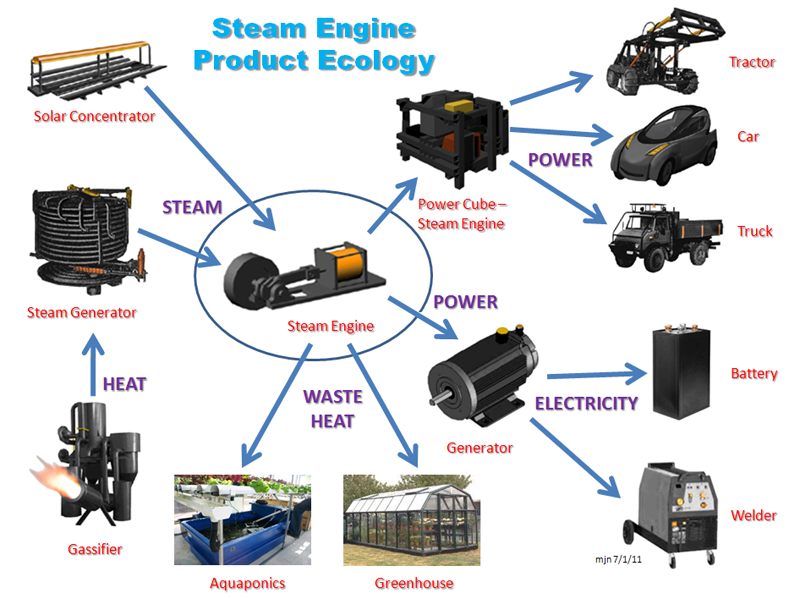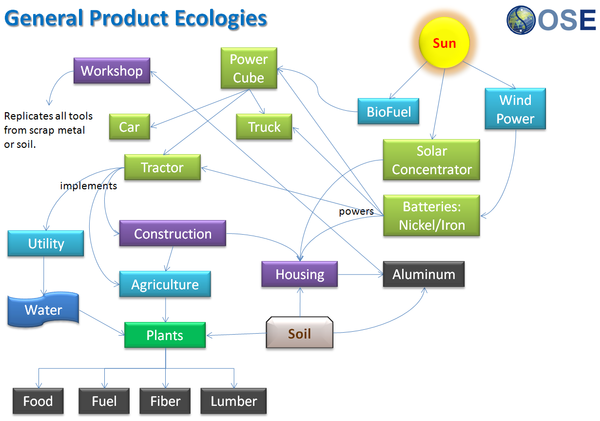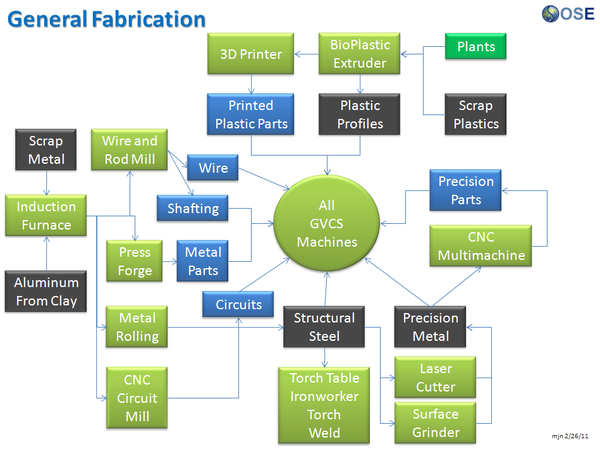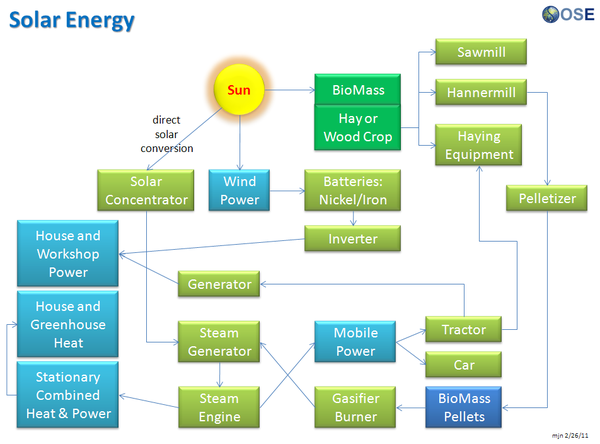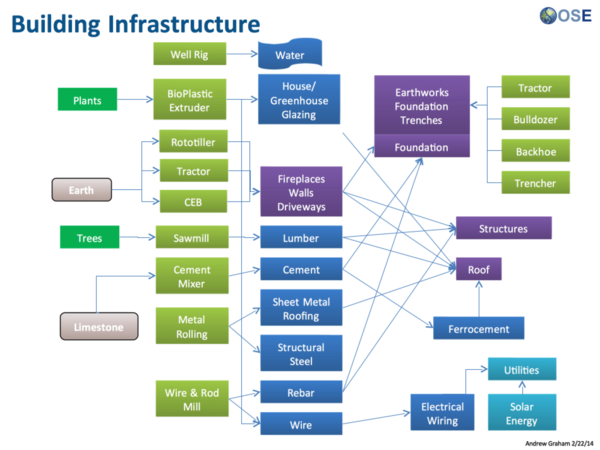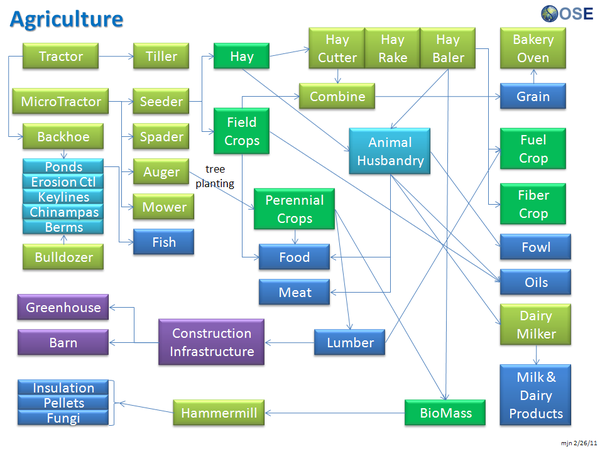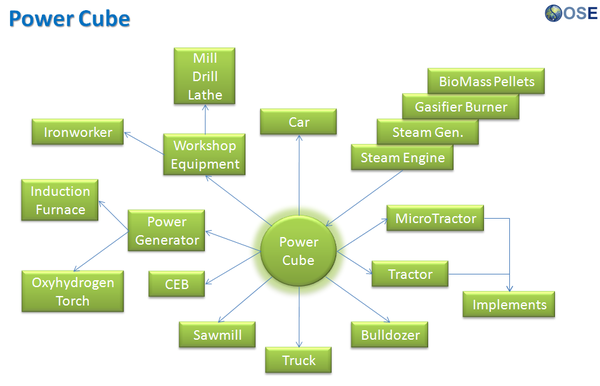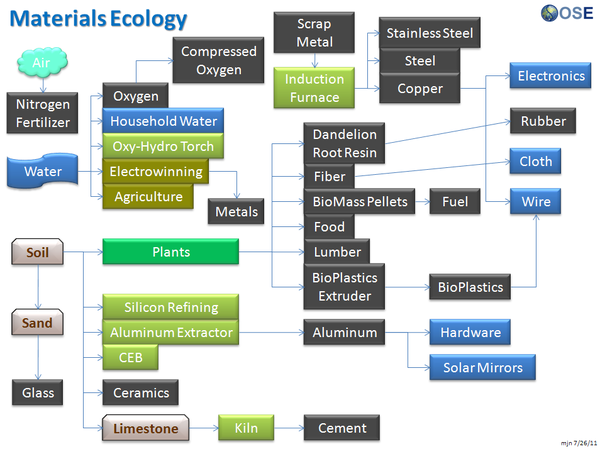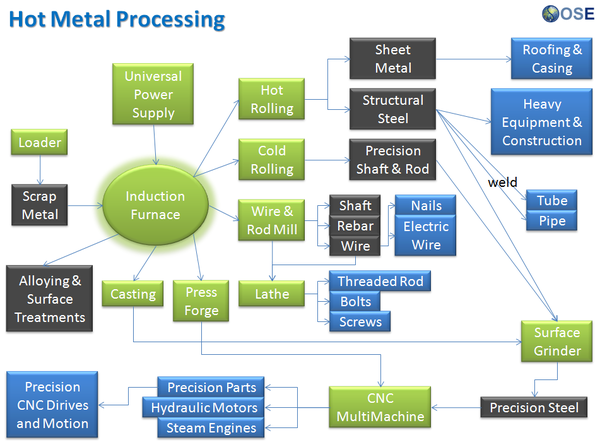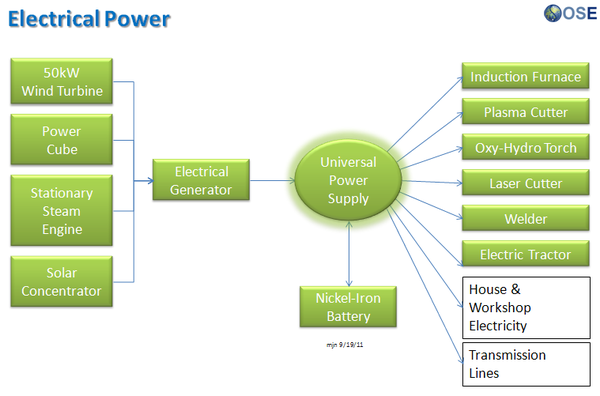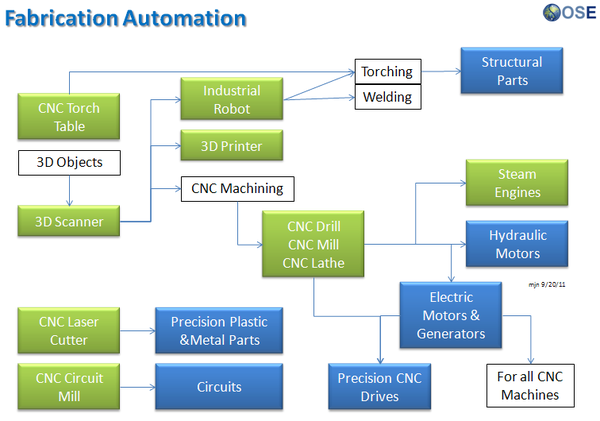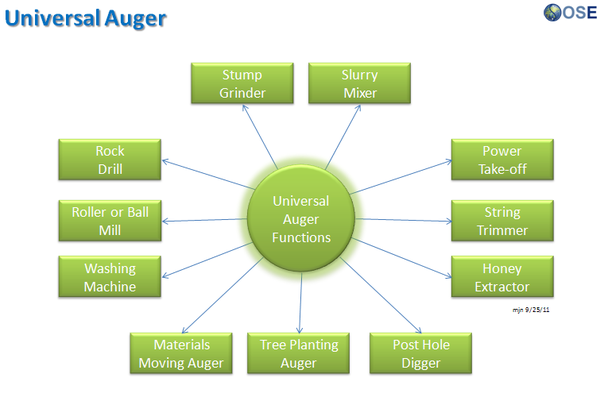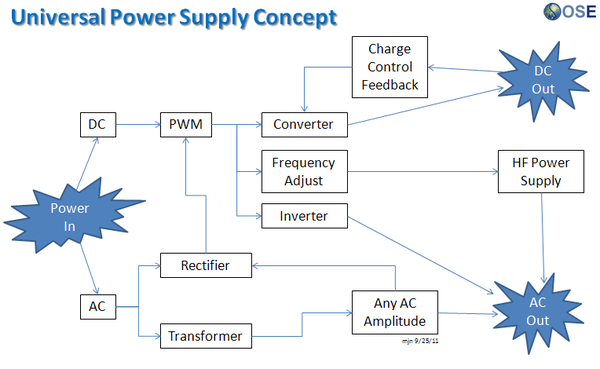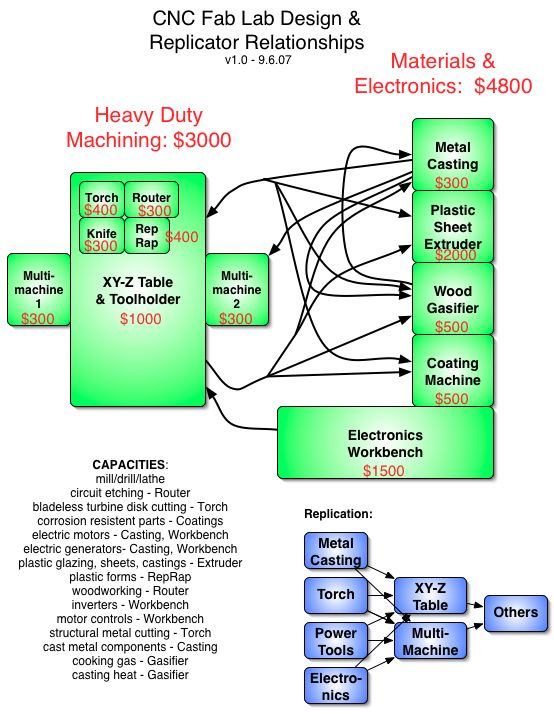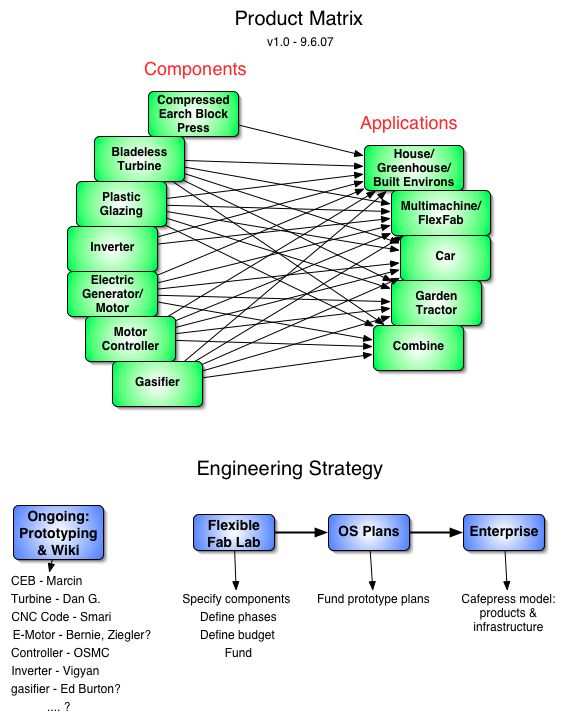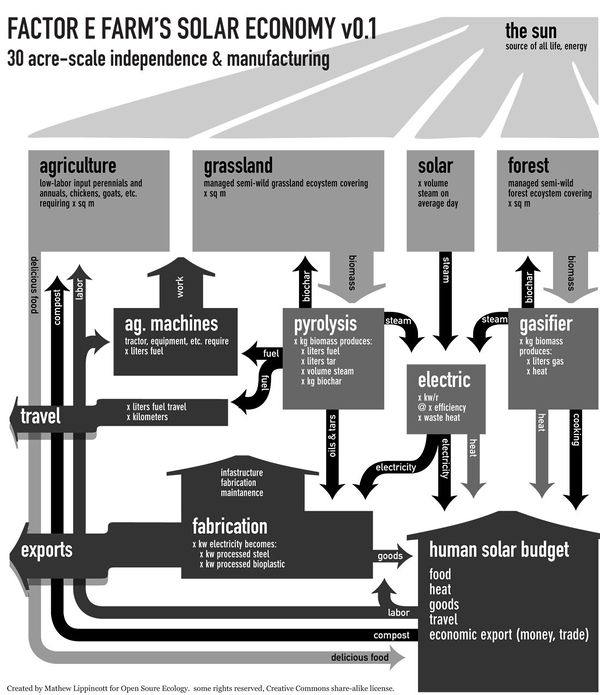Product Ecologies: Difference between revisions
Jump to navigation
Jump to search
| Line 5: | Line 5: | ||
[[Product Ecologies]] illustrate how the different tools of the [[GVCS]] work together. For example, motors, power units, and implements interchange within the tractor, microtractor, car, truck, fabrication, and bulldozer infrastructures. Ecologies can also refer to the way in which a set of tools can be put together to produce a wide array of products - such as the induction furnace contributing to the production of tractor parts, construction roofing, or wire. | [[Product Ecologies]] illustrate how the different tools of the [[GVCS]] work together. For example, motors, power units, and implements interchange within the tractor, microtractor, car, truck, fabrication, and bulldozer infrastructures. Ecologies can also refer to the way in which a set of tools can be put together to produce a wide array of products - such as the induction furnace contributing to the production of tractor parts, construction roofing, or wire. | ||
==Ecologies== | |||
== Product Ecologies == | == Product Ecologies == | ||
Revision as of 17:18, 28 September 2011
see also: GVCS Pattern Language
Introduction
Product Ecologies illustrate how the different tools of the GVCS work together. For example, motors, power units, and implements interchange within the tractor, microtractor, car, truck, fabrication, and bulldozer infrastructures. Ecologies can also refer to the way in which a set of tools can be put together to produce a wide array of products - such as the induction furnace contributing to the production of tractor parts, construction roofing, or wire.
